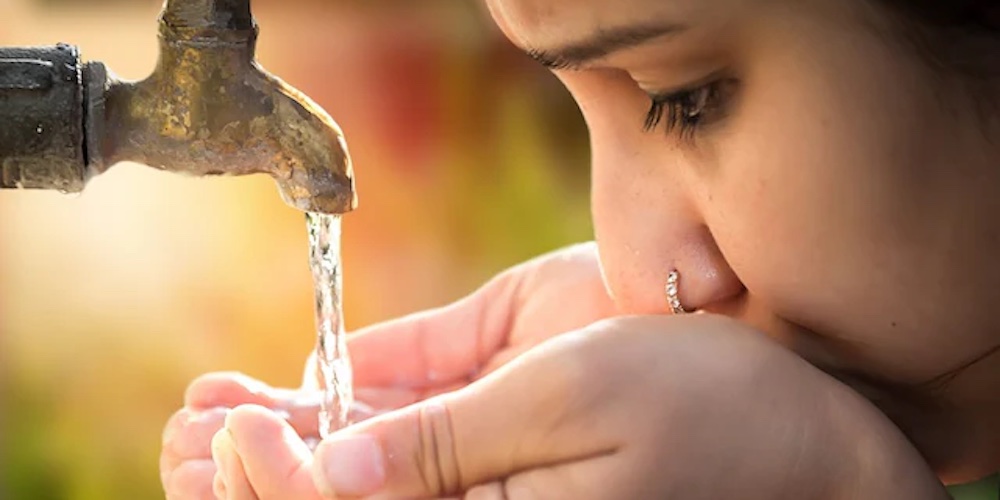Jal Jeevan Mission gets extension till 2028 with outlay of Rs 67k crore

Tap water reaches 79.74% of rural households under JJM
Union Finance Minister Nirmala Sitharaman seems to have won many hearts by announcing an extension of the Jal Jeevan Mission (JJM) till 2028, with an outlay of Rs 67,000 crore in the Union Budget 2025-26.
Launched in August 2019, the JJM was aimed at providing functional household tap connections (FHTC) to provide 55 lpcd (litre per capita per day) drinking water to all rural households in the country by 2024.
“Since 2019, 15 crore households representing 80 per cent of India’s rural population have been provided access to potable tap water connections. To achieve 100 per cent coverage, I am pleased to announce the extension of the Mission until 2028 with an enhanced total outlay,” Sitharaman announced in her Budget speech.
She elaborated that the Mission’s focus will be on the quality of infrastructure and operations and maintenance of rural piped water supply schemes through “jan bhagidhari” (public participation). Separate Memorandums of Understanding (MoUs) will be signed with states/union territories to ensure sustainability and a citizen-centric water service delivery, she added.
The announcement is significant as the scheme was to come to an end last year. The JJM was one of the ambitious schemes of Modi 2.0.
The Government says that as of February 1, 2025, the Jal Jeevan Mission (JJM) has successfully provided tap water connections to 12.20 crore additional rural households, bringing the total coverage to over 15.44 crore households, which accounts for 79.74% of all rural households in India. Initially, only 3.23 crore (17%) rural households had tap water connections.
Jal Jeevan Mission strives for the freedom of mothers and sisters from centuries old drudgery of fetching water for the household, and improving their health, education and socio- economic condition. The Mission is bringing ‘ease of living’ and adding pride and dignity to rural families.
Jal Jeevan Mission also implements source sustainability measures as mandatory elements, such as recharge and reuse through greywater management, water conservation and rainwater harvesting.
The Mission is based on a community approach to water and will include extensive Information, Education and Communication (IEC) as a key component. JJM looks to create a janandolan for water, thereby making it everyone’s priority.
Progress Under the Mission (As of February 1, 2025)
• 15.44 crore (79.74 %) of rural households in the country have been provided with tap water connection.
• The latest status of the Har Ghar Jal initiative shows that 189 districts have reported their progress (indicating that tap water is being supplied to all households, schools, and Anganwadi centres as confirmed by the water supply department), with 108 of them certified (Gram Sabha resolution passed after verifying the water supply). In terms of blocks, 1,862 have reported, and 892 have been certified. At the panchayat level, 1,18,230 have submitted reports, and 79,402 have achieved certification. For villages, 2,51,579 have reported, and 1,53,193 have been certified under the initiative.
• 11 States/UTs, which include, Goa, A &N Islands, Dadra Nagar Haveli & Daman Diu, Haryana, Telangana, Puducherry, Gujarat, Himachal Pradesh, Punjab, Mizoram, and Arunachal Pradesh have provided tap water connection to all rural households (100%) in the respective State/UT.
• Till date 9,32,440 schools and 9,69,585 Anganwadi centres have tap water supply.
Objectives
The broad objectives of the Jal Jeevan Mission include:
• Providing Functional Household Tap Connection (FHTC) to every rural household.
• Prioritizing FHTC provision in quality-affected areas, drought-prone regions, desert areas, and Sansad Adarsh Gram Yojana (SAGY) villages.
• Ensuring functional tap connections in schools, Anganwadi centers, gram panchayat buildings, health and wellness centers, and community buildings.
• Monitoring the functionality of tap connections.
• Promoting voluntary ownership among the local community through contributions in cash, kind, or labor (shramdaan).
• Ensuring the sustainability of water supply systems, including water sources, infrastructure, and funding for regular operations and maintenance.
• Empowering and developing human resources in the water sector, covering construction, plumbing, electrical work, water quality management, water treatment, catchment protection, and more.
• Raising awareness about the significance of safe drinking water and involving stakeholders to make water everyone’s responsibility.

Components under JJM
The following components are supported under JJM:
• Efforts should be made to source funds from different sources/ programmes and convergence is the key.
• Development of in-village piped water supply infrastructure to provide tap water connections to every rural household.
• Development and augmentation of reliable drinking water sources to ensure long- term sustainability.
• Bulk water transfer, treatment plants, and distribution networks where necessary.
• Technological interventions for contaminant removal in areas with water quality issues.
• Retrofitting of ongoing and completed schemes to provide FHTCs at a minimum service level of 55 liters per capita per day (lpcd).
• Greywater management.
• Support activities such as Information, Education, and Communication (IEC), Human Resource Development (HRD), training, utility development, water quality.
• Laboratories, research and development, capacity building of communities, etc.
• Addressing unforeseen challenges due to natural disasters or calamities, as per Ministry of Finance guidelines on Flexi Funds.
Impact of JJM
The implementation of Jal Jeevan Mission has brought significant improvements in rural life, as highlighted by several national and international institutions:
• The World Health Organization (WHO) estimates that achieving JJM’s goals will save over 5.5 crore hours daily, primarily for women, otherwise spent collecting water.
• WHO also projects that ensuring safely managed drinking water for all households in India could prevent nearly 400,000 deaths from diarrheal diseases, saving approximately 14 million Disability Adjusted Life Years (DALYs).
• Nobel laureate Prof. Michael Kremer’s research suggests that safe water coverage could reduce mortality among children under five by nearly 30%, potentially saving 136,000 lives annually.
• The Indian Institute of Management Bangalore, in partnership with the International Labour Organization (ILO), estimates that JJM will generate 59.9 lakh person-years of direct and 2.2 crore person-years of indirect employment during its capital expenditure phase. Additionally, the operation and maintenance phase could generate 13.3 lakh person-years of direct employment.
Quality Assurance and Monitoring
Under the Jal Jeevan Mission, a robust quality assurance and monitoring system has been established to ensure safe drinking water for rural households. A network of 2,162 laboratories has tested 66.32 lakh water samples, while 24.80 lakh women have been trained to conduct water testing using Field Testing Kits (FTKs), strengthening community participation. So far, 85.39 lakh samples have been tested using FTKs, ensuring the early detection of contamination and improved water quality monitoring across villages.
Jal Shakti Abhiyan: Catch the Rain
Recognizing the importance of sustainable water management, the Jal Shakti Abhiyan: Catch the Rain (JSA: CTR) campaign was launched in 2019, focusing on water conservation through people’s participation. In 2023, the campaign emphasized ‘Source Sustainability for Drinking Water,’ and in 2024, it was implemented with the theme ‘Nari Shakti se Jal Shakti,’ highlighting the crucial role of women in water conservation.
Conclusion
In conclusion, the Jal Jeevan Mission has made remarkable strides toward achieving its ambitious goal of providing every rural household in India with a functional tap water connection. With over 15.44 crore households, numerous schools, and Anganwadi centres now benefitting from reliable access to clean water, the mission is significantly improving the quality of life in rural areas. This initiative not only addresses water scarcity but also empowers communities, particularly women, by alleviating the burden of water collection and enhancing public health outcomes. The mission’s emphasis on community participation, sustainability, and technological innovation underscores its long-term vision. As the mission progresses, it continues to transform lives and foster a healthier, more equitable future for rural India.


